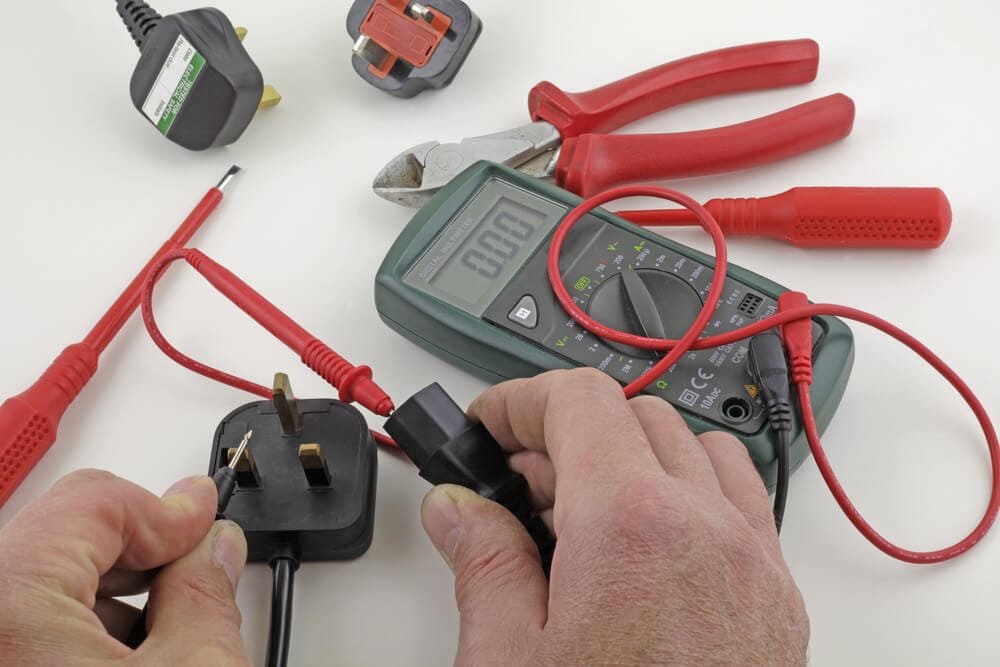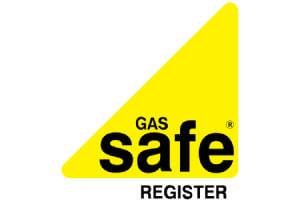
As landlords and business owners navigate the complexities of property management and workplace safety, Portable Appliance Testing (PAT) emerges as a crucial compliance measure. This process not only ensures the safety and efficiency of electrical appliances but also adheres to stringent legal standards, thereby mitigating risks of liability and enhancing tenant and employee trust. Understanding the scope and frequency of PAT, along with recognizing which devices require such testing, can be daunting. However, mastering this can lead to significant long-term benefits in operational safety and legal compliance. The next sections will explore these aspects, offering insights into optimizing this essential practice.
Table of Contents
Key Takeaways
- PAT testing ensures electrical safety, reducing risks of fires and shocks in commercial properties and rental units.
- Legal compliance with UK regulations like Electricity at Work Regulations 1989 mandates regular PAT for workplace safety.
- Responsibility for conducting PAT rests with landlords and business owners, requiring a competent person to perform tests.
- Regular testing frequency depends on the appliance type, usage, and environment, ranging from every 3 months to every 2 years.
- Benefits include enhanced safety, legal protection, cost savings, and maintaining operational efficiency.
What is Portable Appliance Testing (PAT)?
Portable Appliance Testing (PAT) is a systematic process designed to ensure the safety of electrical appliances that are frequently moved or can be easily carried. This protocol involves a thorough inspection and series of tests to verify that portable devices are safe to use and comply with current safety regulations. It is particularly crucial in commercial environments and rental properties, where appliance safety directly impacts public and tenant safety.
During a portable appliance test, each appliance undergoes visual inspections and electrical tests using specialized equipment. The results determine if the appliance meets the necessary safety standards. If an appliance passes the PAT, it receives a portable appliance test certificate. This certification serves as a formal document indicating compliance with safety norms and is a critical component in maintaining safety records for businesses and landlords.
Landlords, in particular, must ensure that all portable electrical appliances in their properties are PAT tested. This adherence not only protects tenants from potential hazards but also legally safeguards the landlord.
A valid portable appliance testing certificate is often required in lease agreements and is indispensable during property insurance assessments or if a safety incident occurs.
Why is PAT Testing Important?
Understanding the significance of Portable Appliance Testing (PAT) becomes apparent when considering the potential consequences of using defective electrical equipment. The risk of electrical fires, electric shocks, and other hazards escalates significantly with the use of malfunctioning appliances, posing serious threats to safety and property.
PAT serves as a preventative measure, systematically identifying and rectifying faults before they lead to accidents or costly damages.
The importance of PAT extends beyond safety; it is also a matter of compliance. Various regulations and insurance policies mandate regular electrical testing to ensure a safe environment for employees, tenants, and customers.
Failure to adhere to these standards can result in legal and financial repercussions, including fines, invalidated insurance claims, and even criminal charges in cases of negligence.
Moreover, PAT testing plays a crucial role in maintaining equipment efficiency and longevity. Regular checks can detect early signs of wear and tear, allowing for timely repairs that ultimately extend the life of the appliance.
This proactive approach not only enhances operational reliability but also optimizes economic efficiency by preventing the unexpected costs associated with equipment failures.
Thus, PAT testing emerges as an indispensable practice in managing and mitigating risks in any appliance-dependent environment.
Who Needs to Carry Out PAT Testing?
Determining who is responsible for carrying out Portable Appliance Testing (PAT) is critical for ensuring compliance with safety regulations. Typically, the duty falls on those who manage or own commercial properties, including landlords and business owners. However, the specifics can vary based on local laws and the nature of the premises.
Responsibility for PAT testing can be delegated to a competent person. This person must have the necessary skills, knowledge, and experience to perform the tests effectively. It’s not merely about checking the functionality but ensuring the safety and compliance of each appliance with current electrical standards.
Here is a breakdown of roles typically involved in the PAT testing process:
| Role | Responsibility |
|---|---|
| Landlord | Ensure all appliances in rented properties are safe. |
| Business Owner | Maintain safety in workplace electrical equipment. |
| Qualified Technician | Conduct tests, ensure compliance, and document results. |
Choosing the right individual or service for this task is paramount, as the safety of tenants and employees hinges on the thoroughness of the testing. Engaging a professional with specific training in PAT testing not only aligns with legal obligations but also imparts a sense of security among all stakeholders.
Which Appliances Require PAT Testing?
Identifying the specific appliances that necessitate Portable Appliance Testing is essential for maintaining compliance with safety regulations. PAT testing primarily applies to electrical appliances that are portable, movable, or handheld, and which connect to the power supply through a flexible cable and a plug. This encompasses a wide range of equipment, from office appliances like computers, printers, and photocopiers, to kitchen appliances such as kettles, microwaves, and toasters.
Moreover, appliances in commercial environments such as power tools, vacuum cleaners, and extension leads also require testing. In industrial settings, larger machinery that is not permanently wired to the electrical installation but connected via a plug should be included in the PAT testing regime.

It’s crucial for landlords and businesses to understand that any appliance provided for use by employees or tenants, which has the potential to cause electrical harm, should be tested.
Special attention should be given to appliances that are frequently moved or subjected to harsh operational conditions as they are more susceptible to wear and tear, potentially increasing the risk of electrical faults.
Understanding which appliances fall under the scope of PAT testing helps in establishing a safer working and living environment.
How Often Should You Conduct PAT Testing?
Having outlined which appliances require Portable Appliance Testing (PAT), it is equally important to address the frequency of these tests to ensure ongoing safety and compliance. The regularity of PAT testing is influenced by several factors including the type of appliance, the environment in which it is used, and the frequency of its use.
For high-risk environments like construction sites or where appliances are frequently moved and subjected to stress, testing might be required as often as every three months. In office settings, where the equipment experiences lighter use, annual testing may suffice. Appliances that are used less frequently and are not exposed to continual wear and tear might only need testing every two years.
It is prudent for businesses and landlords to implement a structured PAT schedule that categorizes appliances based on their risk and usage levels. This strategic approach not only enhances safety but also optimizes resource allocation for testing.
Adopting a risk assessment method will allow you to tailor the testing frequency to the specific conditions and risks associated with each appliance, thereby ensuring maximum efficacy in your safety protocols while maintaining compliance with applicable standards.
PAT Testing Legal Requirements in the UK
In the UK, the legal requirements for Portable Appliance Testing (PAT) are not explicitly outlined in a single piece of legislation, but rather inferred from various health and safety laws.
These regulations are designed to ensure that all electrical equipment in workplaces is safe and does not pose a risk to employees or visitors. The duty to maintain safe equipment is primarily governed by:
- Electricity at Work Regulations 1989: This mandates that all electrical systems must be properly maintained to prevent danger. This implicitly includes regular inspection and testing to ensure ongoing safety.
- Health and Safety at Work etc. Act 1974: Requires employers to ensure the safety of all employees and the public in relation to electrical equipment used.
- Management of Health and Safety at Work Regulations 1999: Obligates employers to perform risk assessments, which would include the regular testing of portable appliances as a measure to mitigate risks.
- Provision and Use of Work Equipment Regulations 1998 (PUWER): Ensures that equipment provided for use at work is safe for use, maintained in a safe condition and inspected to ensure it is correctly installed and does not subsequently deteriorate.
Understanding and complying with these regulations is essential for businesses and landlords to manage their electrical safety obligations effectively.
Benefits of Regular PAT Testing
Regular Portable Appliance Testing (PAT) offers significant benefits, enhancing safety by identifying and mitigating potential electrical hazards before they result in accidents. This proactive approach ensures that electrical equipment is maintained in a safe and functional state, thereby reducing the risk of electrical fires and injury to users.
In environments where multiple devices are continually used, such as offices or residential rental properties, the importance of such preventive measures cannot be overstated.
Besides safeguarding physical well-being, regular PAT also serves as a compliance tool, aligning with statutory obligations that mandate the maintenance of electrical appliances to specific safety standards. This compliance not only protects landlords and business owners from legal repercussions but also fortifies the trust of tenants and employees, enhancing the reputation of the business as a responsible entity.
Furthermore, regular testing can lead to substantial cost savings over time. By detecting faults early, it reduces the likelihood of costly emergency repairs or replacements.
Moreover, efficiently functioning equipment optimized through regular PAT consumes less energy, thereby lowering electricity bills and contributing to environmental sustainability.
Thus, the strategic integration of PAT into maintenance routines provides long-term benefits, reinforcing operational efficiency and safety.
How Much Does PAT Testing Cost?
Understanding the costs associated with Portable Appliance Testing (PAT) is crucial for budget planning in any organization that uses electrical appliances. The expenses for PAT testing can vary widely depending on several factors, making it essential for businesses and landlords to have a clear understanding to allocate resources effectively.

- Number of appliances: The more appliances you have, the higher the overall cost, although the per-unit cost may decrease as volume increases.
- Location: Costs can vary by region, with urban areas possibly being more expensive due to higher operational costs.
- Type of appliance: Complex appliances that require more detailed testing might incur higher charges.
- Service provider: Different PAT testers have varying pricing structures. It’s advisable to get multiple quotes to compare rates.
Typically, service providers charge either a flat rate per appliance or a day rate that covers a certain number of tests. Prices might range from £1 to £3 per item, with day rates varying from £200 to £500.
These costs are influenced by the tester’s qualifications, experience, and the specific needs of the testing procedure. For precise budgeting, engage with several providers to understand their pricing structures and the exact services they offer.
This approach ensures not only compliance with safety standards but also optimizes your expenditure on PAT testing.
Conclusion
In conclusion, Portable Appliance Testing (PAT) is an indispensable safety protocol for landlords and businesses, ensuring compliance with legal standards and enhancing the safety of electrical appliances. It mitigates risks associated with electrical faults, thereby safeguarding both human lives and property. Regular PAT fosters a culture of safety and operational excellence, and although it incurs costs, the benefits of preventing potential legal issues and promoting longevity of equipment make it a wise investment for responsible management.







